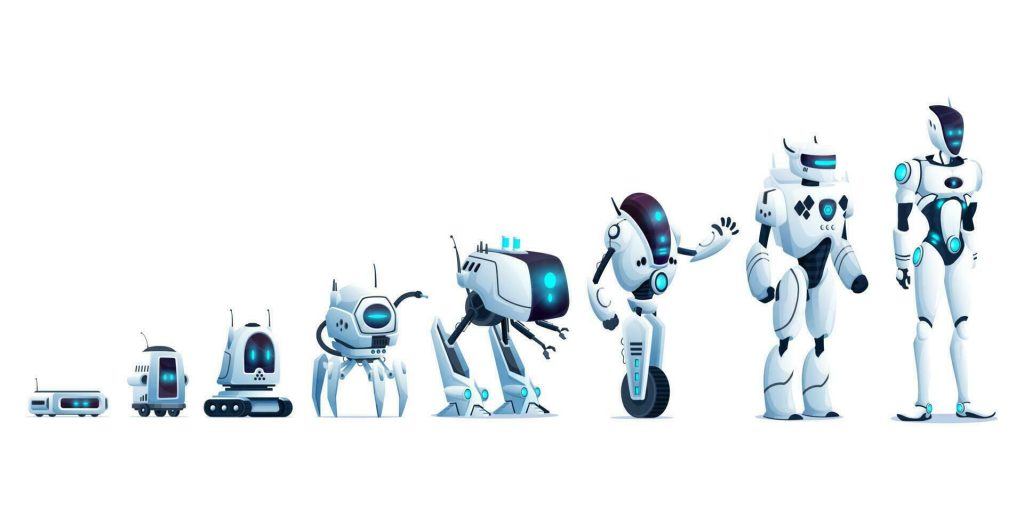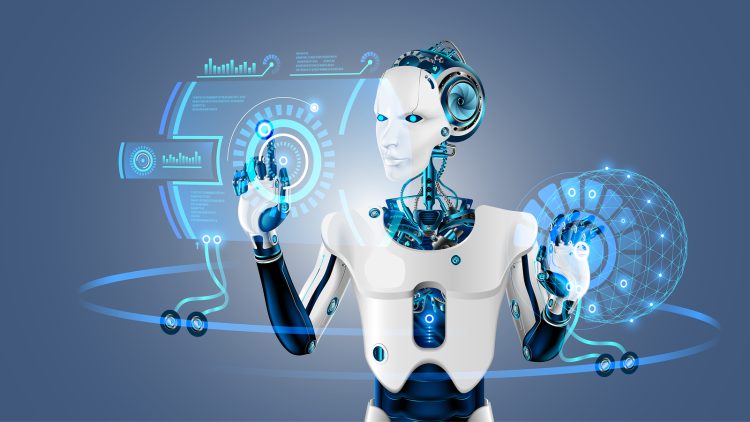Introduction: The Evolution of Robot Technology
Over the last few decades, robot technology has experienced unprecedented advancements. Initially, robots were designed as simple machines meant to automate repetitive tasks in controlled environments, particularly in industries like manufacturing. Their role was confined to basic tasks such as assembly line work, material handling, and simple calculations. These early robots were predictable and functioned under the direct supervision of human operators.
However, with rapid advances in artificial intelligence (AI), machine learning, and robotics hardware, the role of robots is undergoing a fundamental shift. Robots are no longer just mechanical arms or machines performing predefined tasks. They are increasingly becoming autonomous agents capable of making decisions, learning from their environments, and taking on highly complex, varied tasks across a wide range of industries.
Today, robots are being deployed in fields as diverse as healthcare, logistics, autonomous vehicles, agriculture, and even disaster relief. This evolution of robots from simple tools to sophisticated, intelligent systems is reshaping industries, challenging traditional labor markets, and prompting new discussions around ethics, regulation, and human-robot collaboration.
In this article, we will explore how robots have evolved over time, the technologies driving this transformation, and the impact of this change on industries and society. We will also examine the implications of robots assuming more complex roles and how they are changing our understanding of automation and labor.
1. From Simple Tools to Complex Systems: A Historical Overview
The history of robots can be traced back to the early 20th century, with early mechanical devices being used in industrial applications. In the following decades, robots evolved primarily as tools designed to increase efficiency in manufacturing.
1.1. Early Robots: The Dawn of Automation
The earliest robots were relatively simple in design and were largely restricted to specific, repetitive tasks. One of the most famous early robots was Unimate, a robotic arm developed in the 1960s by George Devol and Joseph Engelberger. Unimate was initially designed to perform repetitive tasks like lifting heavy objects and welding in industrial settings. It was the first industrial robot and laid the groundwork for the use of robots in manufacturing.
These early robots lacked the capability to think independently or make decisions. They were controlled via pre-programmed instructions and operated in environments that were highly controlled. The role of robots at this stage was solely to enhance productivity by handling tasks that were either too dangerous, too monotonous, or too precise for human workers.
1.2. Advancements in Robotics: The Rise of AI and Automation
By the 1990s and early 2000s, advancements in computing and AI paved the way for robots with greater autonomy. The introduction of machine learning, computer vision, and sensor technologies allowed robots to process real-time data and interact with their environments. This shift enabled robots to perform more flexible tasks and even begin to learn from their experiences.
In manufacturing, robots evolved from simple task performers to flexible automation systems capable of adapting to new tasks. The rise of collaborative robots (cobots) marked a significant milestone, with robots designed to work alongside human operators without the need for safety cages or barriers. Cobots are now used in industries ranging from electronics assembly to medical device production.
1.3. The Transition to Autonomous Systems
Today, robots are increasingly autonomous, powered by advanced AI algorithms, and are capable of making decisions based on data inputs. Autonomous robots can operate in dynamic, unpredictable environments, performing complex tasks with little or no human intervention. For example, robots used in the healthcare sector can assist in surgeries, provide patient care, and even diagnose conditions based on AI-driven algorithms.
Autonomous vehicles, drones, and mobile robots are now capable of navigating unknown environments and interacting with humans, animals, and other machines in real-time. The integration of AI-driven decision-making is allowing robots to expand their range of tasks, from performing logistical operations to providing companionship for the elderly.
2. Key Technologies Driving Robot Evolution
Several key technological advancements have contributed to the shift of robots from simple tools to complex task performers. These technologies enable robots to operate autonomously, learn from experience, and interact with their environment in ways that were previously unimaginable.
2.1. Artificial Intelligence and Machine Learning
At the heart of modern robotic systems is artificial intelligence (AI). AI enables robots to perceive their environment, learn from experiences, and make decisions based on data. Machine learning (ML) algorithms, in particular, allow robots to improve their performance over time by identifying patterns in data and adjusting their actions accordingly.
- Reinforcement Learning: In reinforcement learning, robots are trained to perform tasks by receiving feedback based on their actions. The robot is rewarded for successful actions and learns to avoid undesirable behaviors. This allows robots to learn complex tasks in unstructured environments.
- Deep Learning: Deep learning, a subset of machine learning, is particularly useful for tasks that require image recognition, natural language processing, and other complex pattern recognition tasks. Robots can learn to identify objects, navigate spaces, and even recognize human emotions using deep learning techniques.
2.2. Computer Vision and Sensor Integration
Robots rely heavily on computer vision to interpret their environment. Cameras, LiDAR, infrared sensors, and other types of vision-based technology enable robots to perceive objects, detect obstacles, and understand spatial relationships in their environment.
For example, robots used in autonomous driving need to process visual data from cameras, LiDAR, and radar sensors to navigate streets, detect pedestrians, and avoid collisions. Similarly, robots in healthcare or logistics can use vision systems to locate and manipulate objects with precision.
2.3. Robotics Hardware and Actuators
The development of advanced robotic actuators and mechanical systems has allowed robots to take on more complex physical tasks. These actuators control the movement of a robot’s limbs and joints, enabling it to perform a variety of motions such as walking, grasping, and lifting.
- Soft Robotics: A particularly innovative development in this space is soft robotics, which uses flexible materials instead of rigid components. Soft robots are able to mimic biological systems more closely, making them ideal for tasks like surgery or delicate object handling.
- Exoskeletons and Prosthetics: Robotics hardware is also being used to enhance human capabilities. Exoskeletons, powered by robotics, assist individuals with mobility impairments, while prosthetic limbs are becoming increasingly sophisticated, providing greater mobility and dexterity for amputees.

3. Complex Tasks Performed by Robots Today
As robots become more intelligent and autonomous, they are increasingly entrusted with complex tasks that require problem-solving, decision-making, and collaboration.
3.1. Healthcare Robotics
In healthcare, robots are transforming the way medical procedures are performed. Robots now assist in surgical operations, providing surgeons with enhanced precision during complex procedures. For example, the da Vinci Surgical System allows surgeons to control robotic arms that perform minimally invasive surgery with extreme precision.
Robotic prosthetics and exoskeletons are also helping individuals regain lost abilities, offering improved mobility and dexterity for those with physical disabilities.
In addition to performing surgeries and providing prosthetics, robots are being used to deliver medications, assist with physical therapy, and even monitor patients’ vital signs in hospitals or at home.
3.2. Autonomous Vehicles
Autonomous vehicles, including self-driving cars, drones, and trucks, represent one of the most ambitious applications of robotics. These robots are capable of navigating complex environments, making real-time decisions, and interacting with other vehicles, pedestrians, and obstacles.
- Self-driving Cars: Companies like Tesla, Waymo, and Uber are advancing autonomous vehicles that can drive without human intervention, using a combination of sensors, cameras, and AI algorithms to safely navigate through traffic.
- Autonomous Drones: Drones are being used for applications such as delivery, inspection, and mapping. These robots can fly over areas that are difficult or dangerous for humans to access, such as disaster zones or high-risk environments like oil rigs.
3.3. Industrial Automation
The manufacturing industry has long relied on robots for assembly line work. Today, robots are used in more advanced applications such as inspection, packaging, and even collaborative tasks with human workers. Collaborative robots (cobots) work alongside humans to handle dangerous or repetitive tasks, while human workers focus on tasks requiring creativity, critical thinking, and problem-solving.
AI-powered robots are also used for quality control, using computer vision systems to detect defects in manufactured products at a speed and accuracy beyond human capability.
3.4. Agricultural Robotics
In agriculture, robots are revolutionizing the way crops are grown, harvested, and managed. Autonomous robots are used for tasks like planting, watering, weeding, and harvesting crops. These robots increase efficiency, reduce labor costs, and even optimize crop yields by collecting data on soil health, plant growth, and environmental conditions.
4. The Future: What Lies Ahead for Robots and Automation?
As robot technology continues to evolve, we are likely to see robots take on even more complex and diverse roles. The combination of advanced AI, robotic hardware, and sensor technology will drive further advancements in areas such as:
- Personal Assistant Robots: These robots will become smarter, more personalized, and capable of assisting with everyday tasks like cleaning, cooking, and providing companionship.
- Space Exploration: Robots will play a critical role in exploring planets, moons, and asteroids. These robots will be able to operate autonomously in harsh, distant environments far beyond the reach of human presence.
- Human-Robot Collaboration: In the future, robots and humans will collaborate more closely in a wide range of sectors, from healthcare to logistics, creating new opportunities for work and innovation.
As these robots continue to evolve, however, society will need to address important issues such as job displacement, ethics in AI decision-making, and the regulation of autonomous systems.
Conclusion: Robots as the New Workforce
The shift from simple tools to complex task performers marks a transformative moment in the history of robotics. Robots are not only becoming increasingly autonomous but also more capable of performing tasks that require cognition, decision-making, and creativity. From healthcare to autonomous vehicles and industrial automation, robots are reshaping industries and providing solutions to some of the world’s most pressing challenges.
As robots continue to integrate more deeply into society and the workforce, their development will require a careful balance between technological progress, ethical considerations, and human welfare. The future of robotics promises significant innovation, but it also demands that we ensure these advancements benefit humanity as a whole.







































